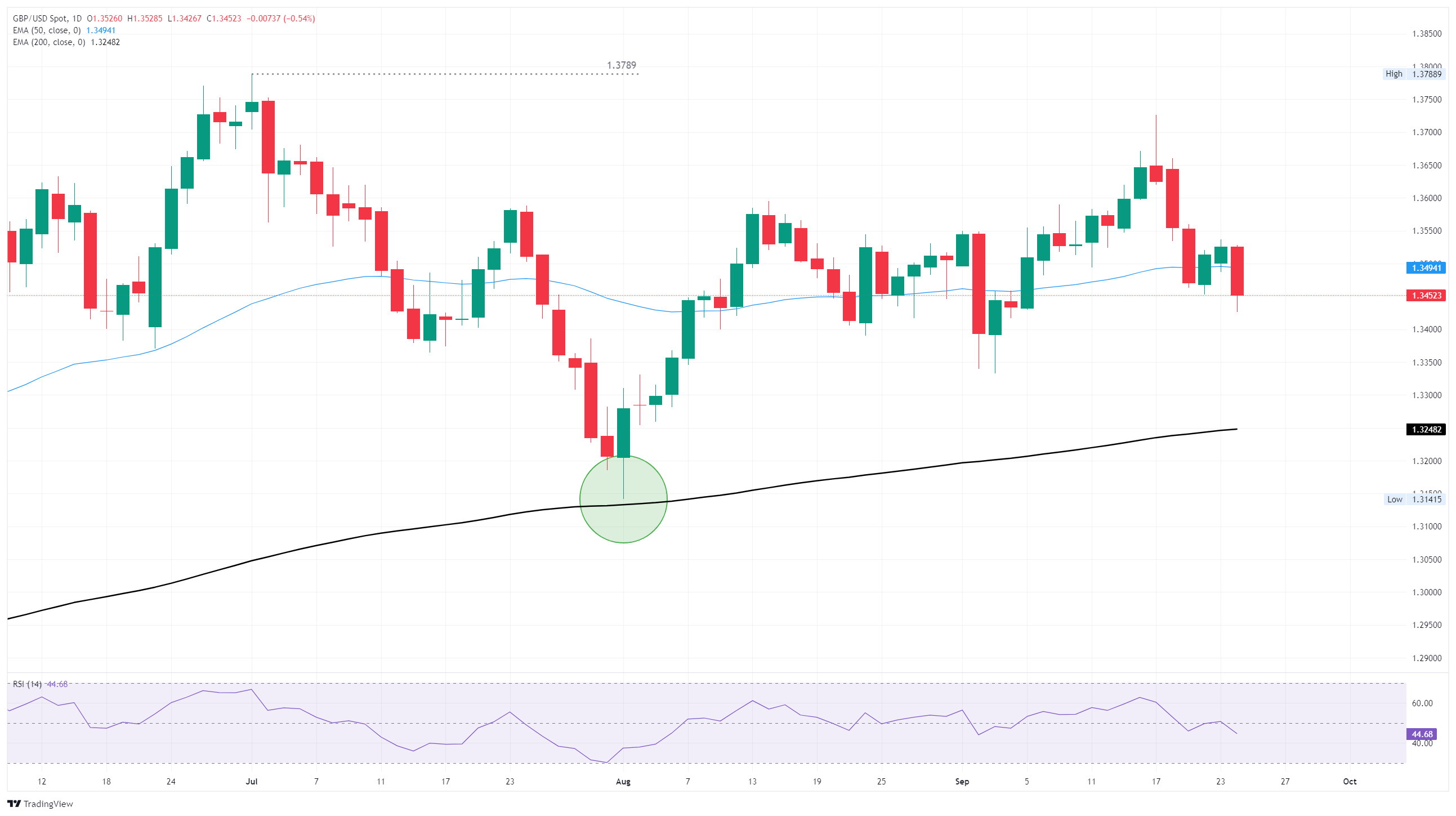GBP/USD flubs bullish recovery, falls back below key technical levels
- GBP/USD fell back below the 50-day EMA on Wednesday.
- Greenback bidding pressure is back on the rise as investors pivot into risk-off.
- Key US PCE inflation data looms large at the end of the week.
GBP/USD fumbled a near-term bullish correction on Wednesday, slipping back below the 50-day Exponential Moving Average (EMA) near 1.3500 and snapping a two-day winning streak. Broad-market risk appetite sharply reversed course heading through the midweek market session as investors weighed a looming US government shutdown and a rapidly approaching round of key US Personal Consumption Expenditure Price Index (PCE) inflation figures.
Cable tested its lowest bids in three weeks on Wednesday, retreating a little over one-half of one percent through the day’s market sessions. GBP/USD has fallen back below the 50-day EMA, but further declines should find a technical floor from the 1.3400 handle.
Coming up: Flurry of mid-tier US data before Friday's PCE inflation print
The UK side of the week’s data docket is functionally empty, leaving a wide swath of US releases in the driver’s seat. Durable Goods Orders, weekly Initial Jobless Claims, and a flurry of speeches from Federal Reserve (Fed) policymakers will great investors on Thursday, but the key datapoint will be quarterly US Gross Domestic Product (GDP) growth, forecast to hold steady at 3.3% QoQ on an annualized basis.
The US’s latest round of Personal Consumption Expenditures Price Index (PCE) inflation is due on Friday, and investors will be looking to see if enough businesses are letting themselves get squeezed out of their own profit margins to avoid passing on too much of their rapidly rising tariff costs directly onto consumers too quickly.
GBP/USD daily chart

Pound Sterling FAQs
The Pound Sterling (GBP) is the oldest currency in the world (886 AD) and the official currency of the United Kingdom. It is the fourth most traded unit for foreign exchange (FX) in the world, accounting for 12% of all transactions, averaging $630 billion a day, according to 2022 data. Its key trading pairs are GBP/USD, also known as ‘Cable’, which accounts for 11% of FX, GBP/JPY, or the ‘Dragon’ as it is known by traders (3%), and EUR/GBP (2%). The Pound Sterling is issued by the Bank of England (BoE).
The single most important factor influencing the value of the Pound Sterling is monetary policy decided by the Bank of England. The BoE bases its decisions on whether it has achieved its primary goal of “price stability” – a steady inflation rate of around 2%. Its primary tool for achieving this is the adjustment of interest rates. When inflation is too high, the BoE will try to rein it in by raising interest rates, making it more expensive for people and businesses to access credit. This is generally positive for GBP, as higher interest rates make the UK a more attractive place for global investors to park their money. When inflation falls too low it is a sign economic growth is slowing. In this scenario, the BoE will consider lowering interest rates to cheapen credit so businesses will borrow more to invest in growth-generating projects.
Data releases gauge the health of the economy and can impact the value of the Pound Sterling. Indicators such as GDP, Manufacturing and Services PMIs, and employment can all influence the direction of the GBP. A strong economy is good for Sterling. Not only does it attract more foreign investment but it may encourage the BoE to put up interest rates, which will directly strengthen GBP. Otherwise, if economic data is weak, the Pound Sterling is likely to fall.
Another significant data release for the Pound Sterling is the Trade Balance. This indicator measures the difference between what a country earns from its exports and what it spends on imports over a given period. If a country produces highly sought-after exports, its currency will benefit purely from the extra demand created from foreign buyers seeking to purchase these goods. Therefore, a positive net Trade Balance strengthens a currency and vice versa for a negative balance.

